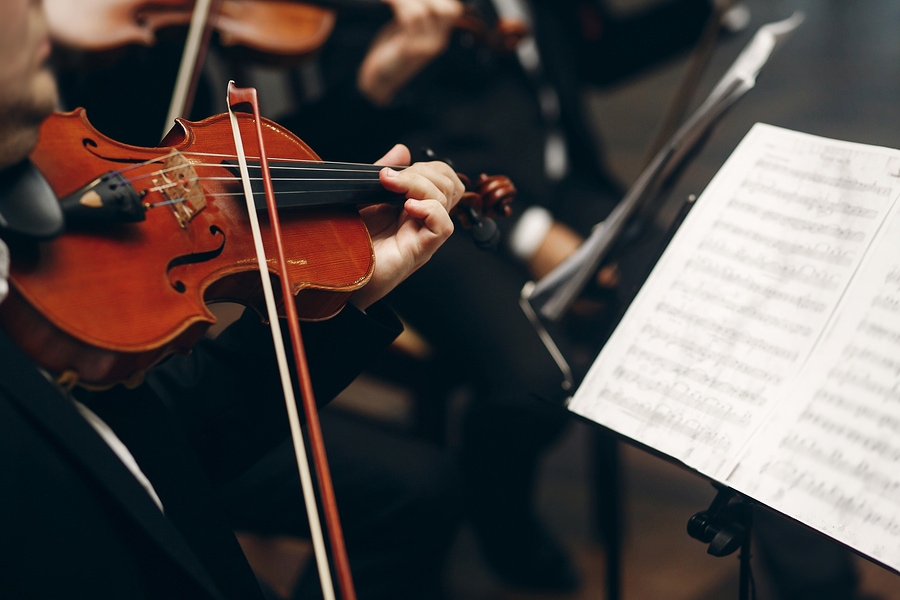

Owing to his formidable technique on the instrument, he was known as the "Paganini of the cello." Through Silva's unparalleled ability to analyze technical problems in his students' playing and assist his student have populated faculties of most of the major American post-secondary schools of music and many of the principal chairs in important symphony orchestras. Though he did not achieve fame as a performer to the same degree as his peers Leonard Rose (1918-1984), Emanuel Feuermann (1902-1942) or Gregor Piatigorsky (1903-1976), Silva had an internationally-acclaimed performing career. Virtually disregarded in contemporary discussions of cello performance and pedagogy is the name of Luigi Silva (1903-1961). The goal of this edition is to use Baroque vocal music to introduce horn students to the musical concepts of expression, articulation, phrasing, and tempo. Each piece is transcribed as a solo with piano accompaniment and as a duet. The bass line is also used as a guide for determining tempo and style. Each aria used the text as a guide for the “affect” and its impact on tone, articulation, and phrasing. Here I have created an edition of Henry Purcell’s songs and arias for young horn students.

These arias and songs can be the perfect portal to Baroque music for horn students as well. Purcell’s songs and arias are an excellent example of the literature that young voice students use. Vocal students are often introduced to Baroque arias early in their training. Since only a small number of middle school and high school horn students continue to play after they leave their school band programs, they many never get first hand experience performing Baroque music. Frequently this music is performed on descant horns. Often this repertoire is not suitable for students until they are well into their collegiate years of study. This music requires an advanced level of technique, endurance, and ability. In this range the partials are closer together, allowing for more melodic writing. Baroque composers wrote for horn using the uppermost register of the instrument. Baroque horn repertoire is very demanding primarily due to the range. The tonal and dynamic ranges of the trombone, as well as its rhythmic and articulation abilities were exercised in Fünf Lieder by Witold Lutoslawski.īaroque music is an area largely neglected in the music education of young horn students and wind players in general. Sieben frühe Lieder by Alban Berg was chosen to demonstrate the chromatic capability of the trombone as a melodic instrument. The Romantic song set of Drei Gesänge von Goethe by Ludwig von Beethoven was chosen to best display the melodic and vocal quality of the trombone. The song sets chosen for this project represent three different periods of music composition, from Romantic to mid-twentieth century.


The purpose of this project was to transcribe and adapt idiomatic songs for the trombone and present the songs in a lecture recital that demonstrated the efficacy of the vocal works as literature for the trombone. SONG SETS BY BEETHOVEN, BERG, AND LUTOSLAWSKI: TRANSCRIPTIONS FOR TROMBONE AND PIANO WITHIN A LECTURE RECITAL. Drei Gesänge von Goethe, "Mit einem gemalten Band," (Ludwig von Beethoven) Sieben frühe Lieder, "Die Nachtigall," (Alban Berg) Fünf Lieder, "Dzwony cerkiewne," (Witold Lutoslawski). Lecture Recital: Friday, February 27, 2015, 3:30 p.m., UNCG Organ Hall. Fanfare, (John Kenny) Sonata, for trombone and piano (Eric Ewazen) Fünf Lieder, (Witold Lutoslawski) Fandango, for trumpet, trombone and piano, (Joseph Turrin). Solo Recital: Sunday, November 16, 2014, 1:30 p.m., UNCG Recital Hall. Red Dragonfly, (Amy Riebs Mills) Sieben frühe Lieder, (Alban Berg) Capriccio da camera, Op. Solo Recital: Sunday, March 2, 2014, 3:30 p.m., UNCG Recital Hall. Sonata Concertante, (Walter Hartley) Romanza Appassionata, (Carl Maria von Weber) Ballade for Bass Clarinet, (Eugène Bozza) Sonatine, pour Trombone et Piano (Jacques Castérède) Cinq melodies de Venise, op. Solo Recital: Sunday, April 28, 2013, 7:30 p.m., UNCG Recital Hall.


 0 kommentar(er)
0 kommentar(er)
